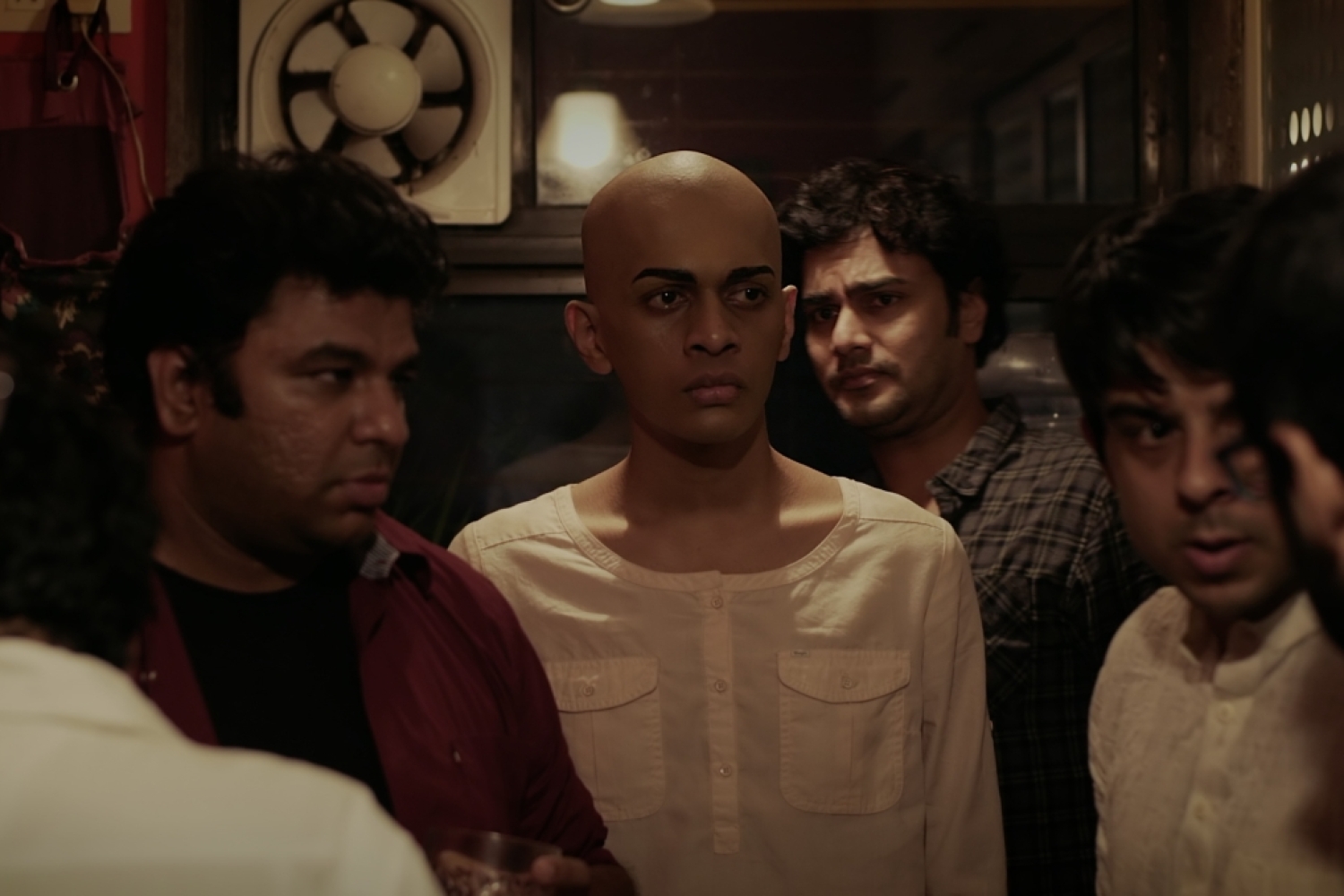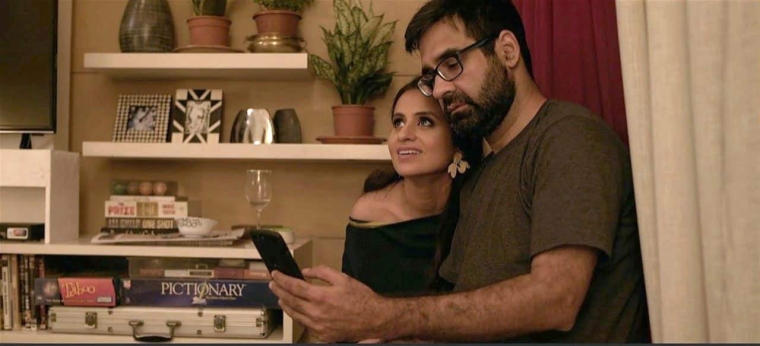

While urban settings typically infiltrates the realm of nature, Karan Gour's film, Fairy Folk, reverses this dynamic by introducing an element of nature into the urban lives of a couple. As the genderless creature integrates into the couple's mundane existence, the boundaries between reality and fantasy blur. Through improvised scenes and heartfelt conversations, the film captures the emotional journey of its characters. It ultimately questions the desires of a modern couple who wishes for a companionship that fights the loniliness of their marriage. Fairy Folk injects a touch of magic into the urban landscape, transforming the ordinary into the extraordinary.
We talk to the director about the characters' emotional journey, his choice of making an improv film, the indie film landscape of India and more.
Why did you choose to make an improv film?
One of the main challenges that I found myself revising the same script multiple times to accommodate different budget constraints or just rewriting it for getting it right. At the same time, I was immersed in watching very weird documentaries that deviated from traditional structures, where people were told to perform. During this time, I was also working on another documentary project that involved an actor who wasn't acting conventionally but rather existed in a hybrid space. Inspired by this, I decided to explore the concept of an improvised film where the actors would have a basic script outlining the plot and character motivations but would improvise their dialogue and actions within each scene. I provided the actors with separate documents detailing their character motivations before each scene. This allowed them to understand the overarching story and their character's mindset before entering the scene. Once on set, we would conduct one take where the actors improvised within the framework of the scene.
However, the real challenge arose during post-production. Editing down to a concise 100-minute film from 3000 minutes footage was a tough task. Additionally, the lack of pre-planned shots meant that editing became even more complex, as we couldn't anticipate which moments would require the emphasis of the camera. Overall, while the improvised approach provided creative freedom for the actors, it posed significant challenges during filming and editing.

What sparked the idea of introducing an unconventional element into an unfulfilling relationship?
Well, it was partly inspired by my experiences living in both Goa and a small town in South India called Kodaikanal. In these places, nature intertwines with daily life, with animals freely roaming around homes and plants flourishing everywhere. Contrastingly, in cities, there's a stark effort to keep nature at bay. This stark contrast intrigued me. I wanted to explore the dynamic between these two worlds colliding. Thus, the concept of introducing a creature from the natural world into the lives of a couple in the city emerged.
I envisioned this creature as a catalyst, forcing the couple to confront the intrusion of nature into their constructed urban existence. It was fascinating to explore how this unexpected presence would impact their relationship dynamics. The idea of magical realism, reminiscent of fairy tales where a kiss transforms a frog into a prince, added another layer to the narrative. However, in this story, the prince isn't quite what one might expect. Instead, he brings forth a multitude of insecurities and complexities, challenging the conventional notion of happily ever after.
In the film, we do encounter a sense of fragile self in Mohit's character. What prompted this exploration?
I don't necessarily approach my work with a predetermined agenda or theme in mind. When I begin writing, I usually start with a premise for the first scene and let the story unfold organically. As I delve into the narrative, I find that the characters and themes that emerge are often reflections of aspects of myself. It's like digging into the earth and finding that everything you unearth is a part of you. So, if the film delves into fragile masculinity, it's because it's a topic that resonates with me and something I felt compelled to explore.
Fragile masculinity is a common experience for many men, often intertwined with issues of low self-esteem and the complexities of long-term relationships. As relationships deepen, so do the vulnerabilities, akin to the friction that leads to arthritis when two joints rub together. Mohit's character, in particular, becomes consumed by his obsession with the creature, adding another layer to the narrative complexity.
How has the indie film scene evolved in India?
I remember a time around 11 years ago when I made Kshay and faced significant hurdles due to limited avenues for distribution. However, around 2015-2016, there was a notable shift with the emergence of OTT platforms. These platforms provided a new opportunity for independent filmmakers to showcase their work, often bypassing the traditional barriers of theatrical releases.
Yet, despite these advancements, the indie film landscape today faces its own set of challenges. There is a growing emphasis on big-budget productions and established names, leaving independent filmmakers struggling to secure distribution deals. This has created a dilemma where quality indie films often struggle to find a platform amidst the noise of mainstream content. There's still optimism within the indie community. Projects like All India Rank and Laapata Ladies have demonstrated that there is an audience hungry for fresh, independent storytelling. It's clear that there's a demand for diverse narratives, and indie filmmakers are determined to find innovative ways to deliver their stories to audiences, whether through traditional channels or newer, self-driven distribution models.
So what's next for you?
I don't know, man. Right now, I'm just struggling with trying to get this project out, getting it sold, and trying to get it done. But I think I'm also trying to write something else at the moment. Not sure what it is, but I'll see how it goes. I think it has to do with animal rescue and time travel and stuff like that. It's like weird stuff that I'm into right now in Goa. Yeah, it's a Goa thing. I think I'm trying to make a Goa movie. Everything related to nature. Nothing to do with beaches and all. So it's to do with this other side of Goa.
Words Paridhi Badgotri
Date 12.03.2024